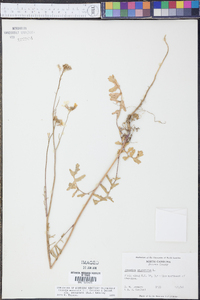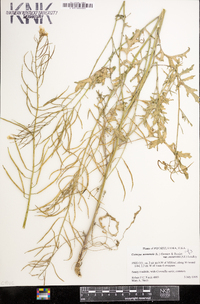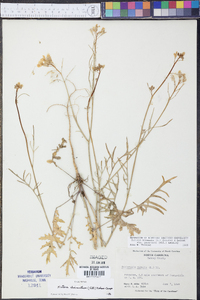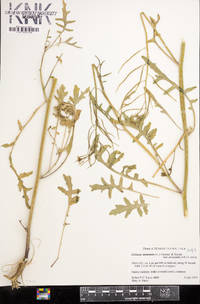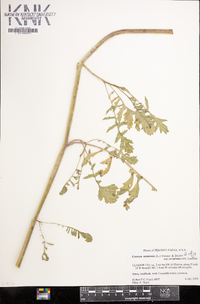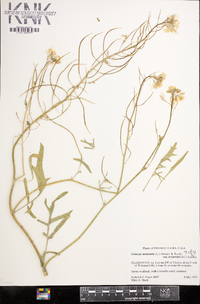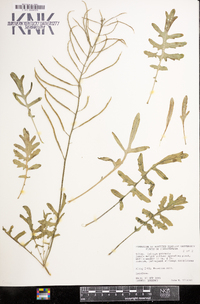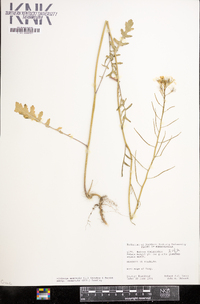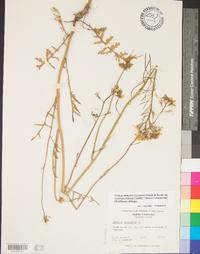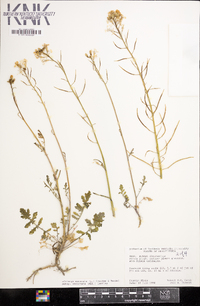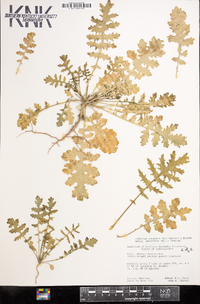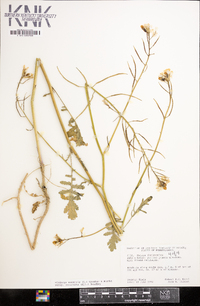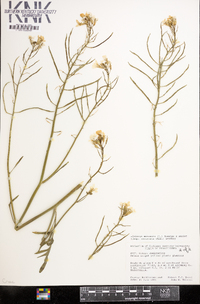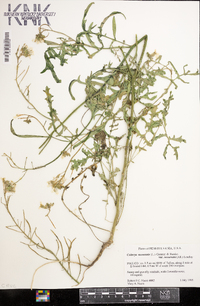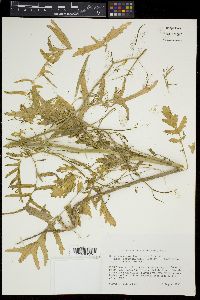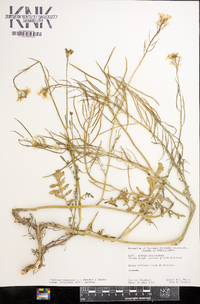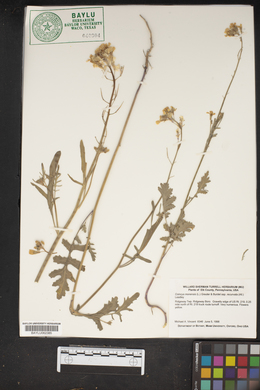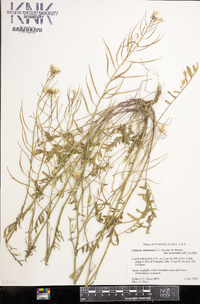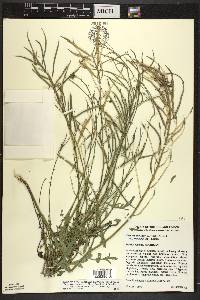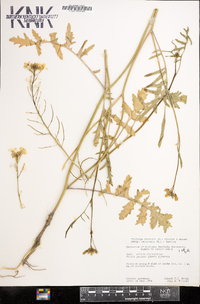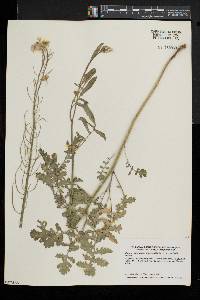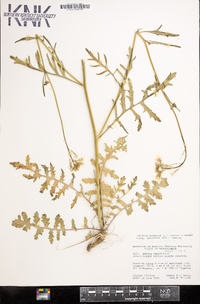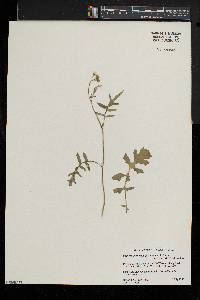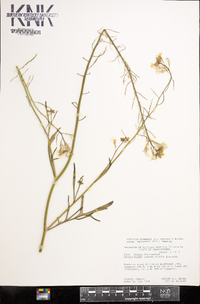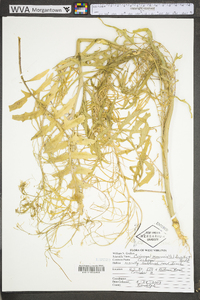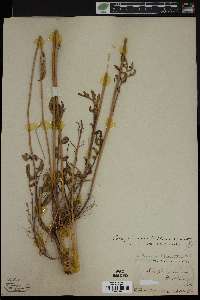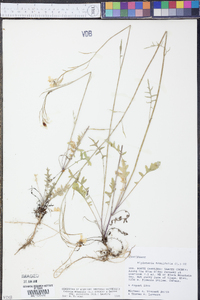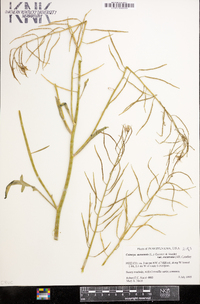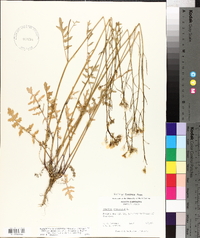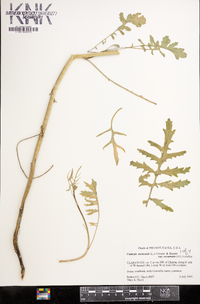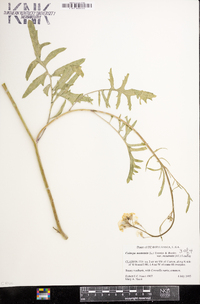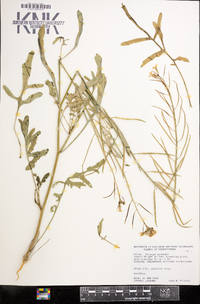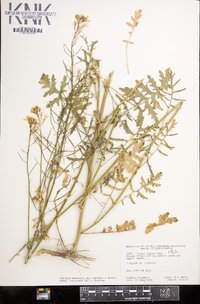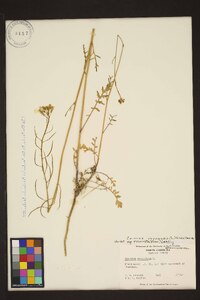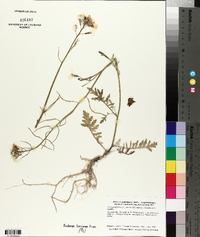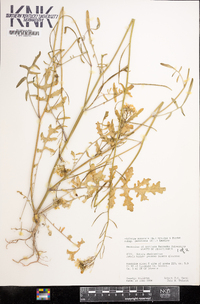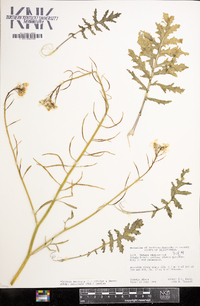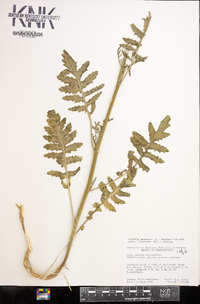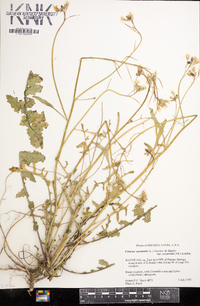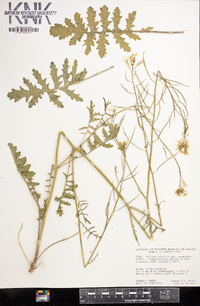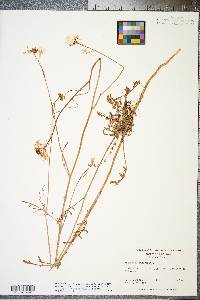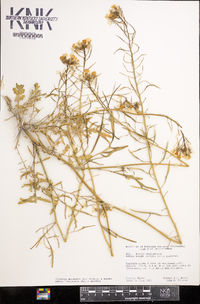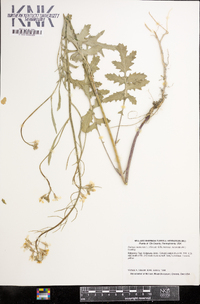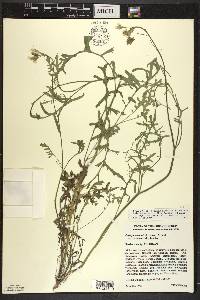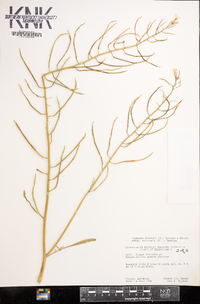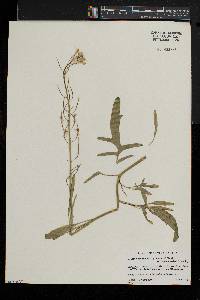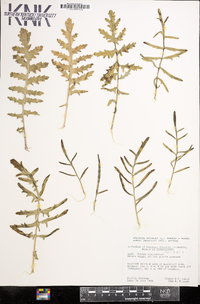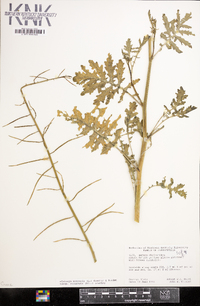Coincya monensis subsp. recurvata
|
|
|
|
Family: Brassicaceae
|
Stems (0.8-)1-10 dm, usually sparsely to densely hispid basally, rarely glabrous, trichomes 0.5-3.6 mm. Basal leaves long-petiolate; blade (3-)5-20 cm × 25-100 mm, lobes 3-9(-10) each side, surfaces sparsely to densely hispid, rarely coriaceous or glaucous, trichomes patent, rarely appressed. Cauline leaves: blade similar to basal, (lobes fewer, narrower than basal). Racemes 2-8(-15)-flowered, open at one time. Flowers: sepals: median pair apex cucullate, (setulose below apex), lateral pair broader, saccate basally; petals 12.5-22(-26) × 2.5-7(-9) mm, claw nearly as long as sepal. Fruits usually straight, rarely curved, (1-)3-9 cm; proximal segment (15-)20-75(-90)-seeded, (8-) 25-75 × 1.5-3 mm, apex obtuse; terminal segment (0 or) 1-5-seeded, (5-)7-23(-34) × 1.5-3 mm; style relatively short. Seeds black to brown, subglobose, 0.8-1.6 × 0.8-1.4 mm. 2n = 24, 48. Flowering May-Aug. Fields, roadsides, mountain road cuts, cliff ledges; introduced; Mich., N.C., Pa.; w Europe; nw Africa. Subspecies recurvata was first recorded from North America in 1880 on ballast in New Jersey (R. C. Rollins 1961, 1981, 1993; I. A. Al-Shehbaz 1985); it was first reported from North Carolina (as Brassica erucastrum) in 1958 from Yancey County and in 1968 from Jackson County (H. E. Ahles and A. E. Radford 1964; Al-Shehbaz). From Pennsylvania, subsp. recurvata was reported from Luzerne County in 1964 and from Bradford County in 1983.
Annual or short-lived perennial herb Stem: sometimes sparingly hairy. Leaves: alternate, one to two times pinnately divided, not clasping, leathery, with a somewhat waxy coating (glaucous). Flowers: yellow. Petals four, 1.5 cm long or more. Stamens six. Fruit: a long, narrow pod, 5 - 9 cm long, with a 0.5 - 2 cm long beak. Beaks contain one to three seeds. Similar species: Coincya monensis ssp. recurvata resembles Diplotaxis, which has petals less than 15 mm long and pods no more than 6 cm long. No other plant in the Brassicaceae family with non-clasping stem leaves has petals more than 13 mm long or such pinnately divided stem leaves. Flowering: late May to late August Habitat and ecology: Introduced from Europe. A rare weed in the Chicago Region, occurring in sandy, weedy areas along railroads and roadsides. Known only from Berrien County, Michigan. Occurence in the Chicago region: non-native Etymology: Recurvata means "bent backwards." Author: The Morton Arboretum |


